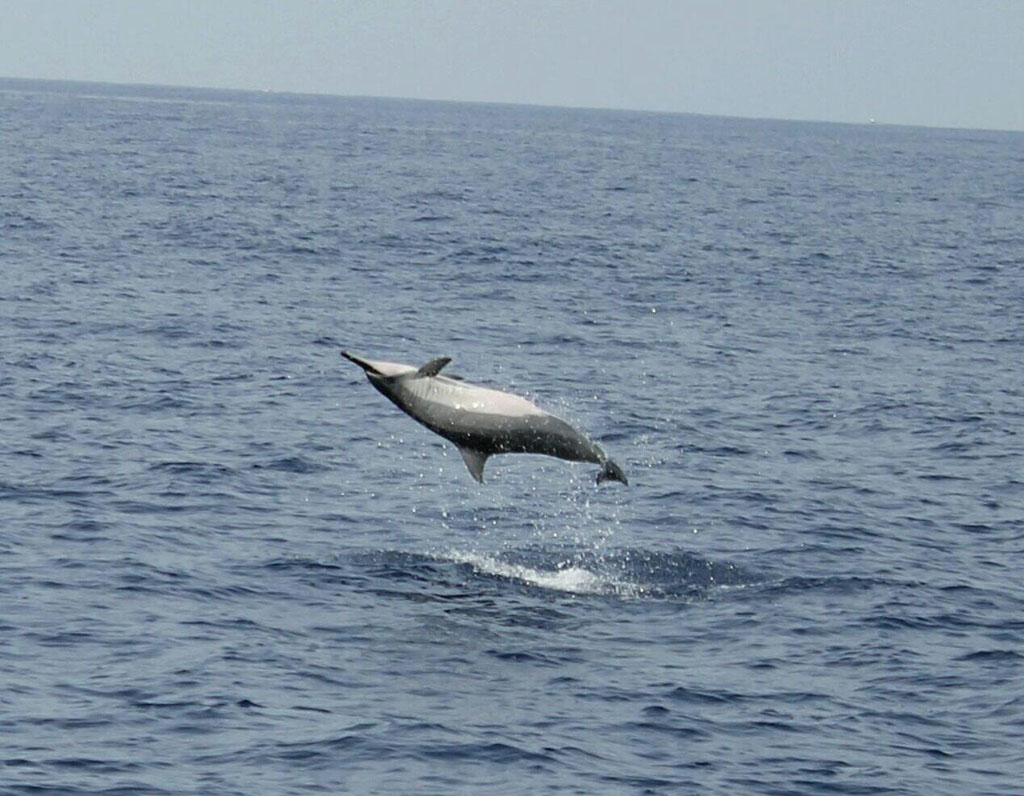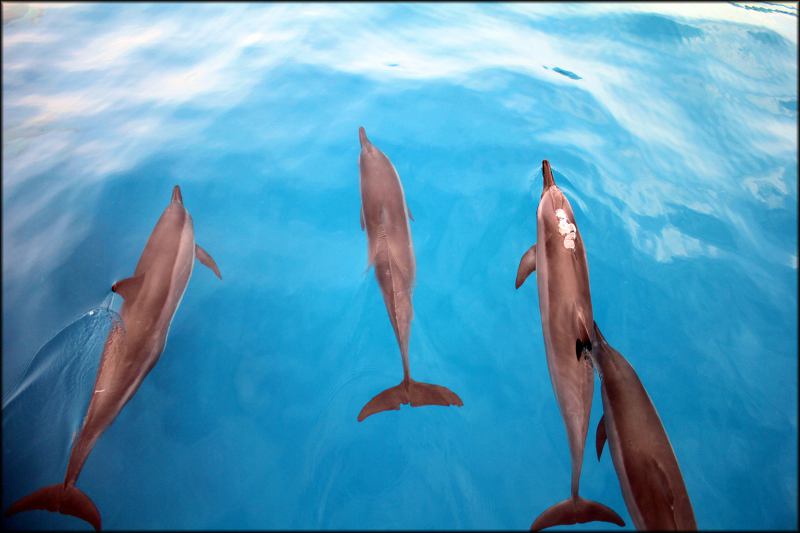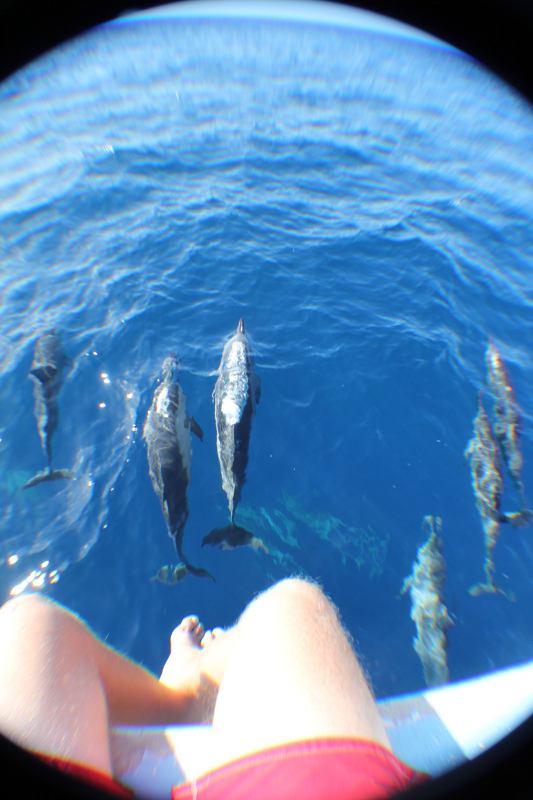
Hawaiian Spinner Dolphins are the smallest dolphin species in the world and are about as close to the human scale as dolphins get. Adults max out at around 200lbs and don’t grow longer than 6 feet. These playful and inquisitive cetaceans can be found in all Hawaiian waters, but are extremely common along big island’s Kona coastline, with most sightings along the 50 mile stretch between Waikoloa and Kealakekua Bay 15 mi south of Kona.
Spinners are best known for their namesake action – spinning, in which they jump out of the water, often upside down, flip or spin, and land back in the water with a tremendous splash. Exactly why spinners do this is unknown, but it’s believed that, like many marine mammals, the spinners posess a playful predisposition and that jumping out of the water and spinning are simply ways to amuse oneself. Other explanations include communication: a big splash is like a bright flash of light when you’re an animal that uses echolocation to see under the water, and hygene: smacking one’s skin against this surface is a good way to scratch an itch.
Spinners are Hawaii’s most viewed dolphins because of their playfulness and inquisitive nature. It’s common to see these animals if you’re out on a boat near Kona, and they’re well known for their tendency to bow-ride, or swim directly in front of a boat as it moves while being pushed along by the bow wave. This isn’t something that happens all over the world. In the eastern Pacific Spinner dolphins have been hunted for hundreds of years and no longer approach boats. In Hawaii dolphins and whales where never used for food and are therefore less distrustful of humans than their asiatic counterparts.

Hawaiian spinner dolphins are nocturnal in that they hunt at night in deep water and return to the clear, calm shallows during the day. Early morning cruisers are often greeted by huge pods of spinners returning to shallow water as the sun rises. During daylight hours spinner dolphins tend to prefer clear water with a sandy bottom against which to spot predators. Daytime is when these dolphins sleep, but cetacean sleep is much different than human sleep. All marine mammals are alike in that they must consciously decide to breathe, rather than doing so unconsciously. This means that a dolphin must keep part of its brain awake when sleeping in order to keep breathing. Termed “Unihemispheric slow-wave sleep” dolphins (and many other marine mammals) will shut down one half of their brain for sleep while the other half remains awake and alert. When in this state the dolphins are still more vulnerable than if they were completely awake, so when sleeping spinner dolphins are often found in large pods with many individuals all keeping one eye open for predators. This is one of the reasons why they’re so commonly viewed close to shore.
There’s nothing quite like seeing dolphins in the wild, and if you’re on the Big Island, the Spinner is the one you’re most likely to see. As humans we relate to these playful creatures more than any other animal in the sea, and if you’re lucky enough to experience Spinners first hand you won’t soon forget it.

